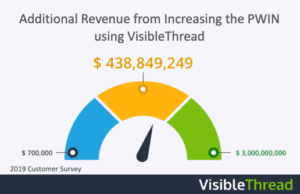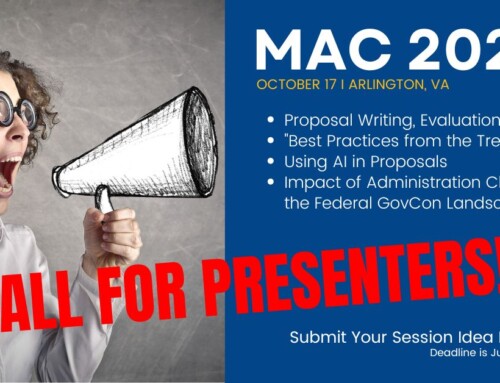
How would you describe your current proposal process? Do you use a color-team vernacular; pink, red, gold, etc.? Do you have a capture planning stage? Now when you think about your process, how much of the work is automated?
Does any of this sound familiar?
If you’re not yet using automation for your process, then I’ll bet the following words/phrases may resonate. Time-consuming. Tedious. Herding cats. Frustrating. Resource-heavy. It’s clear that, for many, the proposal process is far from ideal. Proposal Managers in Bid Centers often work long hours carrying out repetitive, manual tasks. Examples of these tasks include:
- Creating a compliance matrix by hand.
- Checking for correctly defined acronyms.
- Deleting or defining industry terms and jargon.
- Editing what a technical colleague has written. Or re-writing it so it’s more understandable, with a single tone of voice.
- Identifying compliance gaps in the proposal.
- Aligning win themes and making sure the proposal complies with the requirements.
- Finding and making sure you’re compliant with FAR/DFAR clauses.
- Correcting factual errors.
- Checking whether we’ve addressed similar requirements in the past.
- Making sure we have the right resumes and capabilities bundled in our response.
- Finding the best teaming partners.
No doubt you could expand the list with your own examples. Basically, “copy and paste” is the Proposal Manager’s best friend–and simple search in MS Word (CTRL + F5) and PDFs. Or these may be your worst enemy if you think about how much time you spend doing them. Do you ever wonder whether your skills could be put to better use? Whether your time could be better spent?
Automation technology helps you to do exactly that. It comes with three distinct advantages to your process, to your team, and to your career.
1. Automation improves processes
Before you even get started on an RFP response, your team is spending time reading through an RFP and manually creating a compliance matrix using copy and paste. How long does that usually take? What would it mean if automation could reduce this down to minutes?

Now let’s dive into the RFP response. Often a group of Subject Matter Experts (SMEs), proposal managers, marketing, and operations people complete different areas of the proposal. Everyone adds their expertise, great. But they also write in a their own style. Not so great. The final proposal often suffers from three issues:
- Inconsistent tone and readability
- Potential acronym soup
- Possible compliance issues due to missed requirements
When you work with document analysis software like VT Docs, you get a complete solution. This includes simple-to-use tools to:
- Ensure consistent tone across all teams and SMEs
- Define all acronyms once, in the right section of the document, and create an appendix automatically
- Reduce errors due to missed compliance requirements
And those are just three areas where automation and technology can assist with the proposal process. There are many more!
2. Automation benefits your team
 A challenge bid center managers have been sharing with us lately is how to best hire and keep great proposal staff. The hiring pool is shrinking while proposal teams need more hands on deck.
A challenge bid center managers have been sharing with us lately is how to best hire and keep great proposal staff. The hiring pool is shrinking while proposal teams need more hands on deck.
There is another solution to the hiring dilemma. Saving time. During a 2019 research project, we found that our customers save 66.7 hours per proposal on average. If we consider an average 44-hour working week (let’s even add some overtime to that), that’s an extra employee in the shape of some powerful software.
That solves the hiring dilemma. But what about retaining great staff? Technology can take repetitive tasks off the menu. Your team members are able to put their unique skills to better use. For example, using their experience to consider how to best pitch proposals. Getting more job satisfaction because they are more able to carefully craft a winning proposal. They are able to focus on quality, rather than speed. They can add more strategic value since the mundane tasks are automated. That’s job satisfaction right there.
3. Automation benefits your career
 Now imagine you are the proposal manager who has just received the gift of time. The “cut & paste” hours are a thing of the past. You can concentrate on quality and content. Not only that, you’ve reduced human error. No more missed FAR/DFAR clauses, no more errors forwarded through drafts. The proposals you are responsible for are in a single tone of voice. And more importantly, the recipient of the proposal can easily follow the readable text.
Now imagine you are the proposal manager who has just received the gift of time. The “cut & paste” hours are a thing of the past. You can concentrate on quality and content. Not only that, you’ve reduced human error. No more missed FAR/DFAR clauses, no more errors forwarded through drafts. The proposals you are responsible for are in a single tone of voice. And more importantly, the recipient of the proposal can easily follow the readable text.
These quality improvements deliver tangible results. Our survey of users shows a 9.8% increase in pWIN rate. That is $438,849,249 of additional revenue. All because of quality improvements.
How about adding that to your resume or next performance review discussion?
Automation is not a replacement
Automation offers many benefits. But, it’s not a replacement for your staff’s uniquely human skills. The Financial Times said it best:
“Automated systems are far better at dangerous, and repetitive or time-intensive work. Humans perform well on abstract and creative tasks. Putting them together can harness the advantages of both.”
Imagine a proposal process where automation takes the strain off your teams. Where they have time, and energy, to do what they do best. To consider how to best pitch a particular proposal. To decide how to really bring out your strengths as a company. And think about how they’ll feel, given the opportunity to kill the cut and paste. Free to flex their brain power in new and creative ways.
By embracing automation, you will increase your pWIN rate, decrease costs, and boost your revenue. After all, 11 of the top 15 US Federal contractors are doing just that with VisibleThread. Use your automation wisely, and plan to win more in 2020.




Leave A Comment